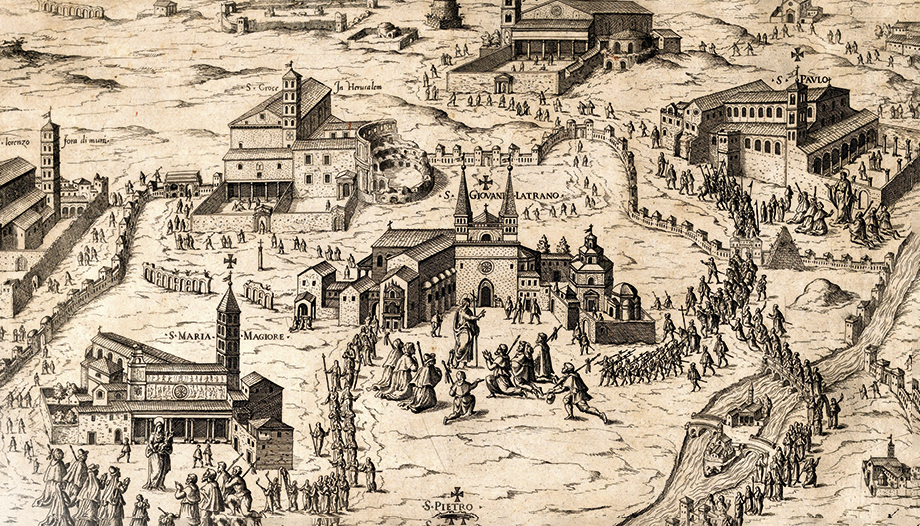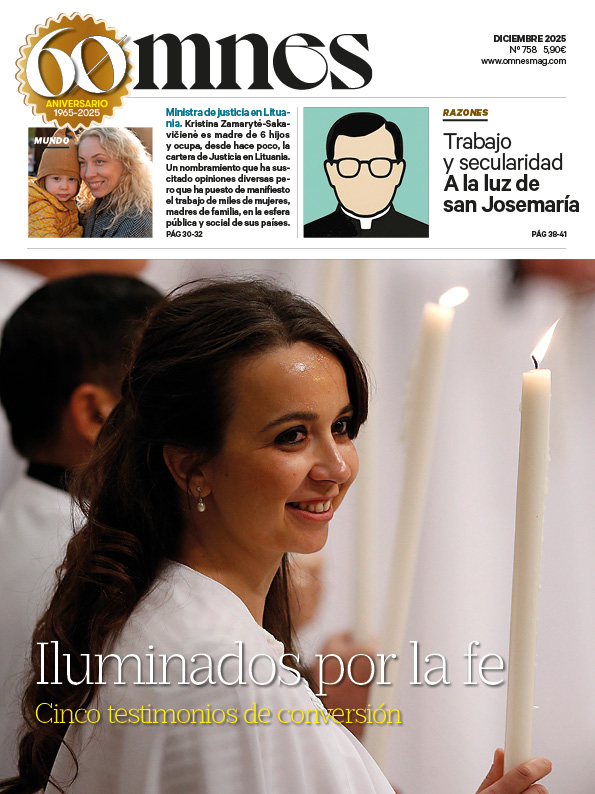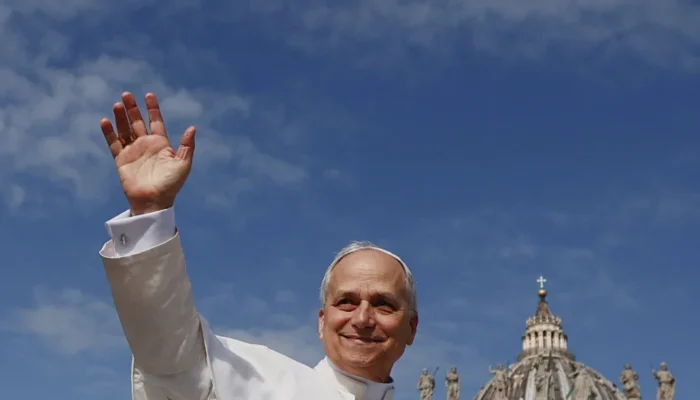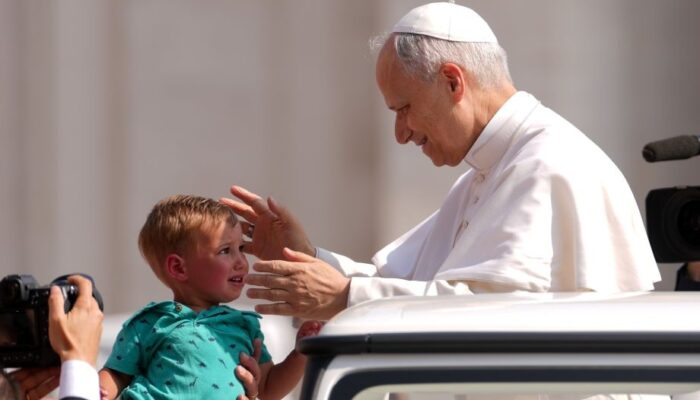Although more than 30 million people are expected in Rome for the 2025 Jubilee summoned by Pope Francis, the Plenary Indulgence can also be gained in every diocese. The Roman Pontiff will open the Holy Door in St. Peter's Basilica on December 24 of this year. He will first preside at the Eucharistic Celebration at 7:00 p.m., followed by the rite of the Opening of the Holy Door. A brief concert of bells will announce the solemn moment, which begins a year of grace for the world.
But the Pope ordered in the bull Spes non confundit that, in addition to Rome, the faithful will be able to gain the Indulgence in their place of residence, because the diocesan bishops will open the Jubilee Year in all cathedrals and co-cathedrals on December 29, two days before the end of the year.
In addition, the Holy Father will also open a Holy Door in the Roman prison of Rebibbia. It will be the first time this will happen in a penitentiary, noted the Pro-prefect of the Dicastery for Evangelization, Archbishop Rino Fisichella, last October 28. The Pro-prefect emphasized that on December 26 Rebibbia will be "symbol of all the prisons in the world"..
Closeness to prisoners
Along the same lines, the last great Jubilee of the coming year will be that of prisoners, on December 14, thus emphasizing the importance of attention to prisoners and their social reintegration, as expressed by the Holy Father in the Bull of Convocation.
"In the Jubilee Year, we are called to be tangible signs of hope for so many brothers and sisters who live in conditions of hardship."Pope Francis wrote in the Bull. "I am thinking of the prisoners who, deprived of their freedom, experience every day - in addition to the harshness of imprisonment - the emotional emptiness, the restrictions imposed and, in many cases, the lack of respect. I propose to the governments of the world that in the Jubilee Year they take initiatives to restore hope; forms of amnesty or remission of sentences aimed at helping people to regain confidence in themselves and in society; paths of reintegration into the community, with a concrete commitment to the observance of the law"..
May, June-July and October, more numerous
Instead of a single gathering of millions of people, which would be impossible, the Jubilees will be held in succession throughout the year 2025, by social sectors.
The first one to be convoked is that of communication. After the one for the Missionaries of Mercy at the end of March, the one for the sick and the health world will take place at the beginning of April, which is expected to be very large in number.
May is one of the months with the largest number of events: six Jubilees, among which are those of workers and businessmen, and two that are also expected to be very well attended: those of the confraternities and families, with children, grandparents and the elderly; and that of the Eastern Churches.
June will open with the Jubilee of Movements, and will conclude with a gathering of seminarians and bishops, and finally with sacerdsotes. And a month later, at the end of July, Rome will host the Youth Jubilee, which, after the gatherings of the last World Youth Days (WYD), such as the one in Lisbon, is also expected to be numerous and, of course, noisy.
After the catechists in September, October will be another important month, in which there will be the month of migrants, the missionary world and consecrated life, Marian spirituality, and the educational world to close the month.
Probably following in the wake of the Assisi meetings, the meeting of the poor will take place in mid-November and, as mentioned, the major events end with that of the prisoners, in addition to the concluding Eucharistic celebrations on December 28 in the particular Churches, and on January 6, 2026, Epiphany of the Lord, in Rome.
Two million young people in the year 2000
In these weeks, not a few people remember the last Jubilee in the year 2000. The crowds of young people who flocked to Rome in August for that WYD may not have been expected. Around two million filled the expanse of Tor Vergata. St. John Paul II told them: "Dear friends who have traveled so many miles by all means to come here, to Rome, to the tombs of the Apostles, let me begin my meeting with you by asking you a question: What have you come here to seek? You are here to celebrate your Jubilee, the Jubilee of the young Church. Yours is not just any journey: if you have set out on this journey, it is not just for reasons of entertainment or culture. Let me repeat the question: What have you come here to seek, or rather, whom have you come here to seek? And the Pope himself replied: "The answer can only be one: you have come to seek Jesus Christ! Jesus Christ who, however, is looking for you first!".
Gianluigi de Palo was there
Among those thousands of young people was Gianluigi (Gigi) De Palo, today president of the Foundation for Birth, the driving force behind the General States of Birth, which Pope Francis attends every year,
Husband and father of five children, who was also involved in the organization of WYD, recalls how the Pope's words that night engraved his life: "It was a bit of a spiritual testament, it was an invitation not to resign oneself to the Third Millennium.". And not resigning was a generation composed today by many mothers and fathers despite the difficulties: "If I got married and had children, I owe a lot to that night."The president of the Foundation stressed once again.
58 Roman temples
The pilgrimage to the Seven Churches, conceived by St. Philip Neri in the 16th century, is one of the oldest Roman traditions, explains the official Jubilee 2025 website (iubilaeum2025.va/it.html). It is about 25 kilometers winding through the city, reaching the Roman countryside, the catacombs and some of Rome's great basilicas.
Among the Seven Churches are what could be called the "four great churches" (St. Peter's, St. John Lateran, St. Mary Major and St. Paul Outside the Walls), and three others: the basilicas of St. Lawrence Outside the Walls, the Holy Cross in Jerusalem, and St. Sebastian Outside the Walls.
The 'Iter Europaeum
The Way of the Churches of the European Union Iter Europaeumincludes stops at 28 churches and basilicas. All are historically linked to European countries for cultural and artistic reasons, or by a tradition of welcoming pilgrims from one of the European Community countries.
Each of these temples has a story that tells the official website. If there is something that characterizes Rome is the number of monuments and buildings found in its old town. One can be mentioned by way of example, called Santa Maria in Ara Coeli or Aracoeli (altar of Heaven). It is located on the Capitoline Hill, at the end of a steep staircase consisting of 124 steps.
The present construction was built in the twelfth century, but there was already a church in the ninth century, built on the ruins of a temple dedicated to Juno Moneta. Legend has it that on this hill the Sibilla Tiburtina foretold the arrival of Christ to Emperor Augustus: "Haec est ara Filii Dei." where its name comes from, "Ara Coeli".
About European women saints
The organizers state that this pilgrimage around the figures of European saints wishes to draw attention to women proclaimed by the Church as Patronesses of Europe and Doctors of the Church.
Those chosen are significant churches that can recall these figures of sanctity, because of the link with the title of the church itself, as in the case of St. Bridget in Campo de Fiori; or because of the presence of relics, as in Santa Maria sopra Minerva, where the body of St. Catherine of Siena is found.
Other temples are Sant'Ivo alla Sapienza, with its university history, suitable to remember the figure of St. Teresa Benedicta of the Cross, philosopher and martyr. Santa Cecilia in Trastevere, patron saint of musicians, refers to Hildegard of Bingen, who developed music among other arts. Trinità dei Monti, related to France, may host the memory of St. Therese of the Child Jesus.
Finally, Santa Maria della Vittoria, with the Ecstasy of St. Teresa by Bernini, recalls the figure of St. Teresa of Avila. Only among the latter are the foundress St. Teresa of Jesus and two other Discalced Carmelite nuns.
Jubilee churches
Twelve churches have been designated as meeting places for pilgrims. In these temples there will be catechesis in different languages to rediscover the meaning of the Holy Year, there will be the opportunity to experience the sacrament of Reconciliation and to nourish the experience of faith with prayer, according to the official website. To avoid unnecessary length, we will talk about only two of them, although they have a technical data sheet on the official website of the Jubilee.
Our Lady of Divine Love
The Sanctuary of Divine Love, located 12 km from the well-known Domine, quo vadis?has been an important pilgrimage destination since 1740. That year a lost pilgrim, pursued by ferocious dogs, invoked the Madonna painted on the tower of Castel di Leva and was saved. The sanctuary, erected in 1744, witnessed a vow of protection made by the Roman people in 1944 during World War II, for which Our Lady interceded, preventing the destruction of Italian cities.
Since then, the feast of the sanctuary is commemorated on the day of Pentecost. Our Lady of Divine Love, a Byzantine icon, symbolizes the relationship between Mary and the Holy Spirit. The original fresco was moved from the tower to the church in 1744. The sanctuary today represents "a spiritual and festive oasis" for pilgrims, it is noted.
Santa Maria in Monserrato degli Spagnoli
Santa Maria in Monserrato was founded in 1506 in the area of Campo Marzio after the construction of a hospice by the Confraternity of Our Lady of Monserrat in Catalonia. The project of the present church was entrusted to Antonio de Sangallo the Younger in 1518.
In the church there are important works by Sansovino and Annibale Carracci, such as "San Diego de Alcantara", while in the portico of the Spanish College there is the bust of Pedro Foix Montoya, a work by Gian Lorenzo Bernini.
The large facade, with two orders, was designed by Francesco da Volterra. The interior has a single nave divided by high pilasters composed with side chapels and a large apse. Among other valuable works inside, there is the fresco over the arch of the central chapel on the right, by Francesco Nappi, depicting the Dormition of the Virgin; the one on the left, by Giovanni Battista Ricci, known as Novara, shows the Coronation of Our Lady of the Assumption.
Caravaggio by Chagall
While the Holy See is donating Caravaggio's "Deposition" to Expo Osaka 2025, which will last from April 13 to October 13, 2025, the 'White crucifixion'. by Marc Chagall from the Art Institute of Chicago. The painting will be located in the new Museo del Corso, in Palazzo Cipolla, with free admission until January 27, at the conclusion of the Jubilee of the world of Communication.
A pain full of serenity
Cristina Uguccioni wrote a few years ago in La Stampa that "when Pope Francis was asked what his favorite work of art was, the Pope replied that Marc Chagall's White Crucifixion.". A work that, according to what he told journalists Sergio Rubin and Francesca Ambrogetti (in the volume Papa Francesco. Il nuovo Papa si racconta)- "is not cruel, but full of hope. It shows a pain full of serenity"..
Marc Chagall, who was born in 1887 in Vitebsk, Belarus, and belonged to a Jewish family, painted the canvas in 1938 in Paris, where he had long resided with his family. "Europe was living one of the most tragic moments in its history: Hitler would invade Poland the following year and for the Jews the time of pain had begun: it goes back precisely to the autumn of '38 the Night of Broken Glass, an event that marked the beginning of the most violent phase of the anti-Semitic persecution carried out by Nazism".
Art historian Timothy Verdon tells Uguccioni that "the White Crucifixion (work of considerable dimensions, 150 x 140 cm), is a painting of vivid colors (...), a painting with a dreamlike style dear to Chagall, who often treated biblical themes with a truly enchanting lyricism."Verdon continues.
"The crucifix, great emblem of the Christian West".
"At the center of Pope Francis' favorite work is the large crucifix to which comes a very white and divine light coming from above: Christ, with his face reclining and his eyes closed, seems to sleep."Ugoccioni describes.
And Verdon adds: "In White Crucifixion, Chagall chose the great emblem of the Christian West, the crucifix, to tell of the terrible suffering endured by his people: the Jewish Jesus, nailed to the cross, becomes its symbol. For the artist, who was not a Christian and did not consider Jesus the son of God, Christ represents the Jewish martyr of every age, the innocent victim of abuse and violence.".
Pope Francis defined the 'White crucifixion'. like "rich in hope"Christian hope - he said in a recent catechesis, recalls the interviewer - "is a fundamental element of the Christian hope. "is the expectation of something that has already been realized and that will certainly become a reality for each of us".








